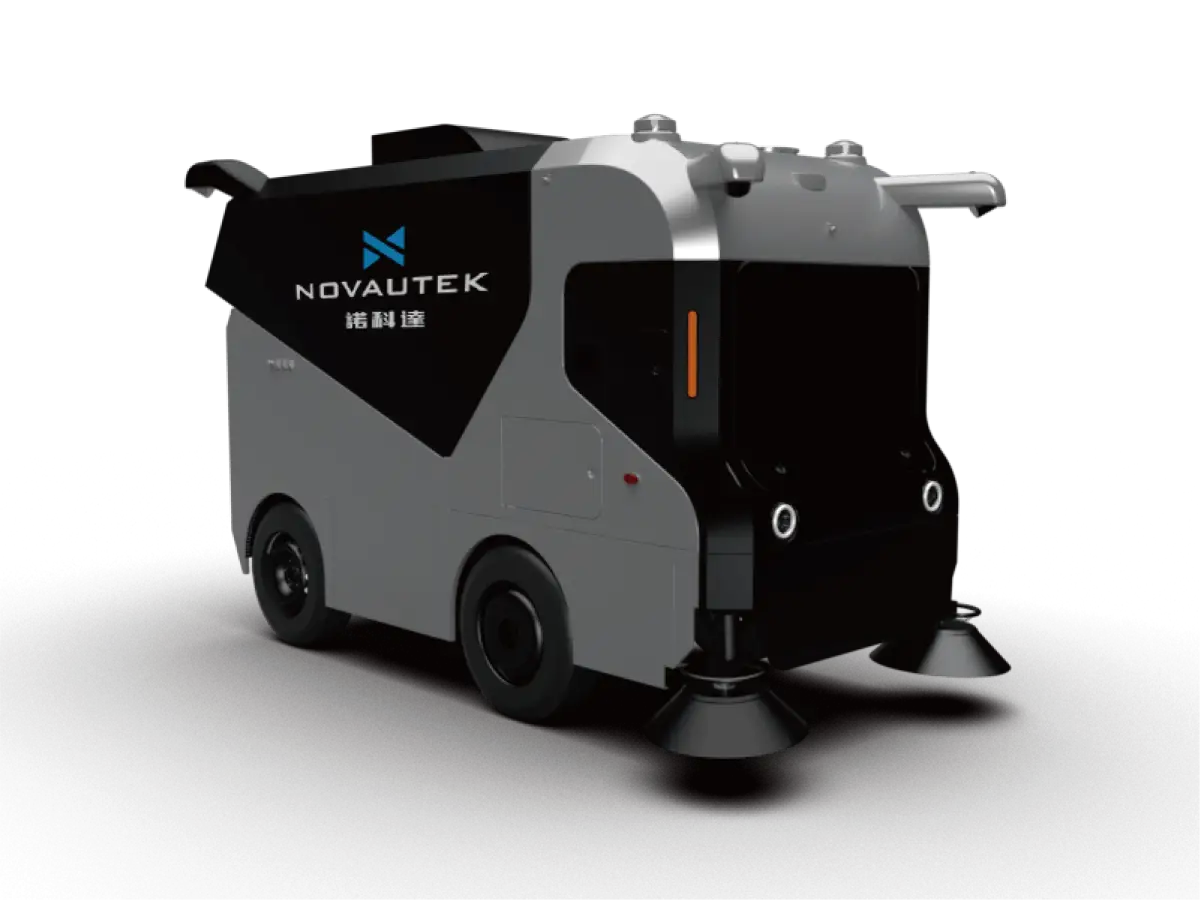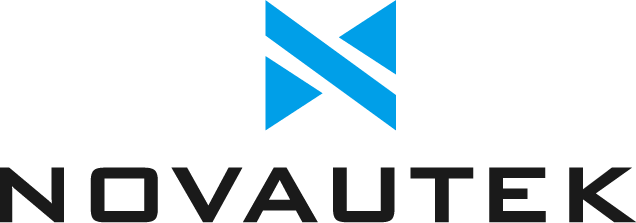Klíčové technologie za průmyslovými úklidovými roboty
Umělá inteligence a strojové učení pro chytré úklidy
Umělá inteligence a strojové učení mění přístup průmyslu k úklidovým pracím, díky čemuž roboti skutečně učí a upravují své metody úklidu během práce. Chytré algoritmy v těchto systémech umožňují úklidovým robotům rozpoznávat různé typy nečistot a poté přizpůsobovat svůj postup. V jedné automobilce například nasadili čisticí prostředky řízené umělou inteligencí, které sledovaly dění na výrobní ploše a upravovaly svou trasu pro maximální efektivitu. Jaký byl výsledek? O 30 % lepší výkon při úklidu a výrazně méně vody a mýdla odtékajícího do kanalizace. Strojové učení také výrazně pomáhá při bezproblémovém provozu úklidových robotů. Tyto systémy analyzují frekvenci používání a další provozní údaje, aby odhalily případné problémy ještě než se stanou vážnými záležitostmi, čímž zůstává úklid stále stejně kvalitní bez neočekávaných výpadků. Nesmíme však zapomínat ani na analýzu dat. Když továrny sledují vzorce úklidu v průběhu času, mohou lépe plánovat trasy a časové harmonogramy, což znamená, že všechno běží mnohem efektivněji.
Pokročilé senzory pro přesnou navigaci
Průmyslové čisticí roboty by nemohly navigovat tak přesně bez svých pokročilých senzorových systémů. Tyto stroje spoléhají na kombinaci různých senzorových technologií včetně LIDAR skenerů, ultrazvukových detektorů a běžných kamer, aby se pohybovaly v komplikovaných prostorech. Vezměme si například LIDAR – poskytuje robotům vlastně kruhový pohled na okolní prostředí, což pomáhá předcházet srážkám a zajišťuje efektivní čištění bez zbytečného opakování. Ultrazvukové senzory fungují jinak, ale jsou stejně důležité – měří, jak blízko se přibližují předměty, a upozorňují robota, když je něco příliš blízko v místech, kde se neustále pohybují lidé a zařízení, například uvnitř výrobních závodů nebo skladových zařízení. Podle nedávných studií se v továrnách, které přešly na tyto chytré senzorové systémy, zvýšila přesnost čištění o více než 80 procent, zároveň se zkrátil celkový čas potřebný na úklid. Co je opravdu výhodné na všech těchto senzorech, je, že poskytují neustále aktualizované informace o prostředí, takže pokud se během provozu objeví něco neočekávaného, robot může téměř okamžitě zareagovat. Tato reaktivní navigační technologie už nyní výrazně mění skladové operace po celé zemi.
Zvýšení efektivity továrny pomocí autonomních operací
čištění 24/7 bez lidského down-time
Autonomní čisticí roboti mění způsob fungování továren, protože dokážou udržovat čistotu po celý den bez nutnosti manuálního zásahu. Fakt, že podlahy zůstávají trvale čisté, znamená, že pracovníci neztrácejí čas úklidovými pracemi, což zvyšuje celkovou produktivitu. Některé výrobní závody zaznamenaly pokles prostojů o více než 30 % poté, co přešly na tyto nepřetržité řešení pro úklid. Nedávno mi jeden zámečník řekl, že od instalace robotů klesly požadavky na údržbu kvůli špinavým podlahám o polovinu. Tyto stroje nezachovávají pouze bezvadnou čistotu povrchů, ale také šetří náklady. Když továrny nemusí platit zaměstnance za pravidelné směny úklidu, mohou být tyto prostředky přesměrovány jinam. Co je opravdu zajímavé, je způsob, jakým tato technologie mění rozdělení pracovních úkolů. Místo strávení hodin čištění podlah mohou nyní zaměstnanci vykonávat kontroly kvality a sledování stavu zařízení, které vyžadují rozhodování, nikoli opakované pohyby. Obě strany profitují, když lidé soustředí svou pozornost na složitější úkoly a základní práce přenechají robotům.
Přesná provádění úkolů pro konzistentní výsledky
Pokud jde o úklidové práce, automatizace přináší úroveň přesnosti, kterou je opravdu těžké dosáhnout ruční prací. Roboti prostě dělají přesně to, co jim řeknete, a nemají tendenci dělat chyby, což znamená méně předělávek a lepší výsledky. Vezměte si například školní okres v New Yorku. Když začali používat úklidové roboty, zaznamenali velký rozdíl v čistotě ve srovnání s ručním úklidem. Rodiče už tolik nekritizovali špinavé třídy, protože roboti dodržovali svůj úklidový plán pokaždé. Co tyto stroje dělá ještě lepšími, je fakt, že dostávají pravidelné softwarové aktualizace a učí se zkušenostmi. To znamená, že v průběhu měsíců a let se neustále zlepšují v tom, jak se rozhodují, kde se soustředit a které oblasti potřebují extra pozornost. To vede k tomu, že továrny, které tuto technologii využívají, mají stejnoměrnou čistotu ve všech oblastech. Nejenže to působí dojmem na návštěvy, ale zaměstnanci také profitují z lepších hygienických podmínek a zlepšuje se průběh provozu každý den.

Bezpečnostní pokroky v nebezpečných prostředích
Snížení vystavení pracovníků nebezpečným podmínkám
Výrobny nyní spoléhají na průmyslové čisticí roboty pro ty nejnebezpečnější práce, které ohrožují pracovníky, a díky tomu jsou pracoviště výrazně bezpečnější. Tato zařízení dokážou zvládnout prostředí, kam by lidé neměli vstupovat – například místa s extrémním žárem, smrtícími chemikáliemi vznášejícími se ve vzduchu nebo vzduchem nasyceným škodlivými částicemi. Podniky využívající tyto roboty hlásí mnohem méně nehod než dříve. Některé studie ukazují, že počet zranění klesl téměř na polovinu od doby, kdy roboty začaly provádět špinavou práci v nebezpečných oblastech. Tyto roboty jsou navrženy tak, aby odolaly škodlivinám, jako jsou těžké kovy, koroze vyvolávající kyseliny a výbušný prach, a přitom zůstávají plně funkční. Pomáhají tak firmám dodržovat bezpečnostní předpisy a nařízení. Kromě ochrany zaměstnanců má takováto shoda s předpisy i pozitivní dopad na podnikání, neboť snižuje právní komplikace a zároveň posiluje důvěru klientů i regulátorů. Přechod na roboty pro čištění demonstruje, že vedení firem dbá na blaho zaměstnanců, ale zároveň má tento krok dlouhodobě významný podnikatelský smysl.
Systémy pro prevenci kolizí ve jménu operační bezpečnosti
Robotické operace v průmyslovém prostředí se díky technologii prevence kolizí výrazně zabezpečují. Moderní systémy využívají inteligentní plánování cesty a detekci objektů, aby nehody zabránily ještě před jejich nastáním, čímž chrání jak stroje, tak i pracovníky. Mnoho továren dosáhlo skutečných výsledků díky tomuto druhu technologie. Jako příklad můžeme uvést velký závod vyrábějící autodíly, který po instalaci těchto systémů snížil pracovní úrazy o přibližně 40 %. Co to vlastně umožňuje? Kombinace různorodých senzorů spolupracujících se speciálním softwarem umožňuje robotům pohybovat se složitými prostory bez nárazu do překážek. Výhody přitom jdou dál než jen bezpečnost. Továrny díky nižšímu počtu nehod ušetří na pojištění. Menší prostojy znamenají stabilnější výrobu, zatímco pracovníci mají lepší pocit z toho, že jejich pracoviště skutečně dbá na jejich bezpečnost.
Úspory nákladů a optimalizace zdrojů
Nižší náklady na práci díky automatizaci
Když továrny začnou používat průmyslové roboty pro úklidové práce, zpravidla zaznamenají výrazné snížení nákladů na mzdy. Tyto stroje zvládnou veškerou nudnou a fyzicky náročnou práci, kterou už nikdo nechce dělat ručně. Společnosti zjistí, že když se objeví tito robotičtí uklízeči, potřebují méně zaměstnanců ve funkcích uklízečů. Někteří výrobci uvádějí úspory v rozmezí 30 % až 50 % na nákladech na úklidovou pracovní sílu již během šesti měsíců po instalaci. Samozřejmě, nákup těchto robotů znamená zpočátku vysokou investici, ale většina továren si tyto náklady dožene během jednoho až dvou let. Skutečný přínos tkví v tom, jak stále stejně spolehlivě tyto roboty pracují den za dnem, aniž by se unavily nebo se rozptýlily. Co je ještě lepší, je to, co se stane s lidmi, kteří dříve tyto úklidové práce dělali. Místo zametání podlah se nyní mohou soustředit na údržbu nebo kontrolu kvality, kde jejich dovednosti opravdu záleží. Tento druh transformace pracovní síly činí automatizaci nejen finančně výhodnou, ale pro moderní výrobní zařízení i provozně nezbytnou.
Energeticky úsporné systémy pro udržitelné provozování
Uklízecí roboti dnes disponují vestavěnou energetickou účinností, která v průběhu času snižuje provozní náklady. Zaměření na úsporu energie je výhodné nejen pro peněženku – zapadá to přesně do toho, co firmy usilují o dosažení, pokud jde o odpovědné občanství a plnění ekologických cílů. Zařízení po celé zemi si všimla skutečného poklesu svých energetických nákladů, někdy až o více než 10 % díky novějším technologickým vylepšením. Stále více správců budov se obrací k těmto účinným systémům, protože udržitelnost se stává něčím, co již nelze ignorovat. Když budovy spotřebovávají méně elektřiny, pomáhá to dosahovat širších environmentálních cílů a zároveň udržuje prostředí čisté a plně funkční každý den. Pro majitele nemovitostí, kteří chtějí zmenšit svou uhlíkovou stopu, aniž by obětovali výkon, nabízejí tito roboti praktická řešení, která dobře fungují v reálných podmínkách.
Budoucí trendy v robotické údržbě továren
Integrace IoT pro chytré správy zařízení
Zavádění IoT technologií do průmyslových čisticích robotů mění způsob, jakým továrny zajišťují údržbu, a zvyšuje výkon těchto strojů. Díky vestavěnému IoT nyní čisticí roboti komunikují s ostatním vybavením v továrně, okamžitě sdílejí informace a celkově efektivněji pracují. Vezměme si například skladovací prostory, kde tyto roboty ve skutečnosti sledují své vlastní výkonnostní ukazatele po celý den. Jakmile něco začne odchýlit od normálu, operátoři okamžitě dostanou upozornění, aby mohli upravit nastavení nebo přesměrovat robota do oblastí, které vyžadují extra pozornost. Skutečný průlom přináší právě tato propojená data. Manažeři továren už nejen reagují na problémy, ale dokáží je předvídat i několik dní dopředu díky rozpoznávání vzorů ve datech. Již dnes jsme svědky továren, které snížily prostojy o 30 % poté, co tato inteligentní systémy zavedly. A jak výrobci dále zdokonalují své IoT sítě, směřujeme k plně integrovaným chytrým zařízením, kde každý stroj přesně ví, co všechno ostatní stroje dělají.
Strategie prediktivní údržby řízené umělou inteligencí
AI mění způsob údržby čisticích robotů díky technikám prediktivní údržby, které snižují prostojy a prodlužují životnost robotů. Tyto chytré systémy analyzují, jak často jsou stroje používány a jaké problémy se v minulosti vyskytly, aby určily, kdy bude nutná další údržba. To znamená, že čisticí roboti zůstávají efektivní po delší dobu a méně často dochází k neočekávaným poruchám. Reálné testy ukazují, že továrny ušetří peníze na nákladech za opravy, zatímco jejich roboti pracují lépe. Když firmy přesně vědí, kdy může dojít k poruše svého zařízení, mohou se vyhnout těmto nákladným překvapením a udržet výrobu v chodu bez přerušení. Mnoho výrobců již nahlásilo významné úspory po zavedení těchto AI přístupů. Jak se strojové učení každý rok zlepšuje, stávají se tyto prediktivní nástroje ještě chytřejšími a pomáhají provozům pracovat čistěji a efektivněji napříč různými odvětvími.
Často kladené otázky
Jaké technologie se používají v průmyslových úklidových robotech pro navigaci?
Průmyslové čisticí roboti používají pokročilé senzory, jako jsou LIDAR, ultrazvukové senzory a kamery, aby dosáhli přesné navigace a vyhýbali se překážkám v komplexních prostředích.
Jak zdokonalují umělá inteligence a strojové učení průmyslové čisticí roboty?
Algoritmy umělé inteligence a strojového učení pomáhají čisticím robotům učit se a přizpůsobovat své čistící vzory, optimalizovat čistící trasy, zlepšovat prediktivní údržbu a zvyšovat efektivitu analýzou reálných dat.
Jaké jsou bezpečnostní výhody používání čisticích robotů v továrnách?
Čisticí roboti snižují vystavení pracovníků nebezpečným prostředím a minimalizují míru úrazů tím, že zpracovávají nebezpečné úkoly, zajistí dodržování bezpečnostních předpisů a mají systémy pro prevenci kolizí, které zabrání nehodám.
Můžou čisticí roboti v továrnách pomoci snížit náklady?
Ano, průmyslové čisticí roboti mohou snížit náklady na práci automatizací opakovaných úkolů a zlepšit energetickou účinnost pro dosažení cílů udržitelnosti, což vede ke snížení celkových nákladů.
Jak prospívají integrace IoT průmyslovým čisticím robotům?
Technologie IoT umožňuje čisticím robotům připojovat se k systémům továrny pro sdílení dat v reálném čase, přesný monitoring a provádění prediktivní údržby, čímž zvyšují efektivitu a správu zařízení.
Obsah
- Klíčové technologie za průmyslovými úklidovými roboty
- Zvýšení efektivity továrny pomocí autonomních operací
- Bezpečnostní pokroky v nebezpečných prostředích
- Úspory nákladů a optimalizace zdrojů
- Budoucí trendy v robotické údržbě továren
-
Často kladené otázky
- Jaké technologie se používají v průmyslových úklidových robotech pro navigaci?
- Jak zdokonalují umělá inteligence a strojové učení průmyslové čisticí roboty?
- Jaké jsou bezpečnostní výhody používání čisticích robotů v továrnách?
- Můžou čisticí roboti v továrnách pomoci snížit náklady?
- Jak prospívají integrace IoT průmyslovým čisticím robotům?

